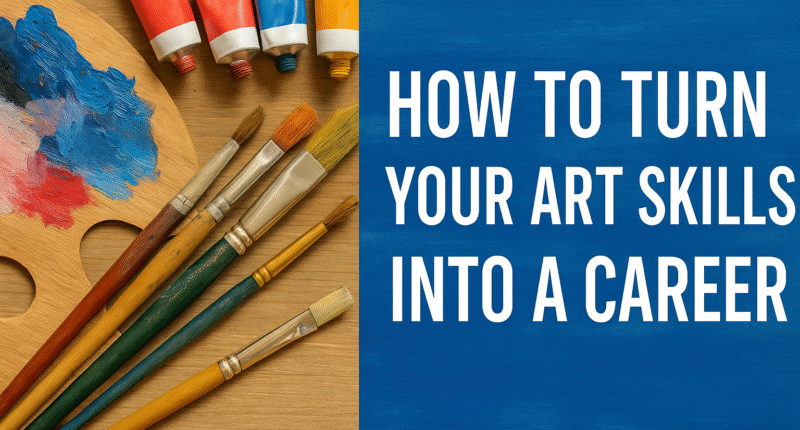Art is not just a hobby—it can also become a rewarding profession. With the growth of digital platforms, creative industries, and global demand for visual content, artists today have more opportunities than ever before. If you want to transform your passion for art into a sustainable income, here’s a guide on how to turn your art skills into a successful career.
Identify Your Strengths and Niche
Every artist has unique strengths, whether it’s painting, illustration, photography, music, or digital design.
Find Your Unique Style
Ask yourself: What type of art excites you most? Developing a personal style will help you stand out in a competitive market. Whether you focus on traditional techniques or modern digital tools, your niche will define your career path.
Build a Professional Portfolio
A portfolio is essential for showcasing your skills to clients, galleries, or employers.
Creating a Strong First Impression
Gather your best work into a digital or physical portfolio. Platforms like Behance, Dribbble, or Instagram are excellent places to display art online. Your portfolio should highlight your versatility while emphasizing your strongest projects.
Learn the Business Side of Art
Being a successful artist is not only about creativity—it’s also about understanding the business aspects.
Marketing and Branding
Learn how to market yourself as a brand. Use social media, build a personal website, and engage with communities to expand your visibility. Pricing your art fairly and managing contracts are also crucial steps for career growth.
Explore Multiple Income Streams
Relying on a single source of income can be risky. Successful artists often diversify their earnings.
Ways to Monetize Your Art
-
Selling original pieces or prints
-
Teaching workshops or online classes
-
Freelancing for design, illustration, or photography
-
Licensing your artwork for products or merchandise
-
Collaborating with brands or galleries
Network and Collaborate
Connections play a big role in the creative industry.
Building Valuable Relationships
Attend art shows, join online art communities, and collaborate with other creators. Networking helps you gain exposure, find mentors, and access new opportunities.
Keep Learning and Improving
Art careers thrive on growth and adaptation.
Adapting to Industry Trends
Stay updated with new tools, techniques, and platforms. Whether it’s learning digital design software or exploring new art mediums, continuous improvement ensures long-term success.
Stay Motivated and Consistent
Success in the arts takes time, patience, and persistence.
Turning Passion Into Discipline
Set daily or weekly goals to create, market, and network. Consistency builds recognition and trust, helping you turn art into a career that lasts.
Conclusion: Turning Creativity Into a Profession
Turning your art skills into a career is possible with the right strategy. By identifying your niche, building a portfolio, learning business skills, diversifying income streams, and networking, you can transform passion into profession. With dedication and persistence, your creativity can open doors to financial stability and personal fulfillment.









